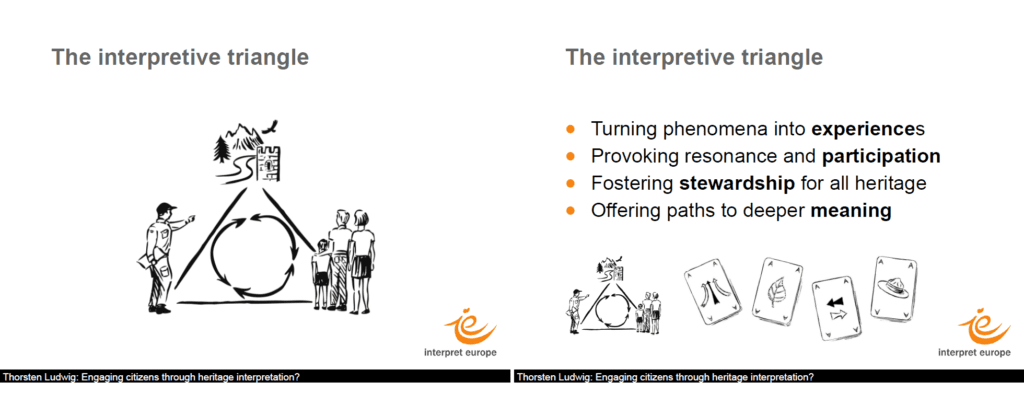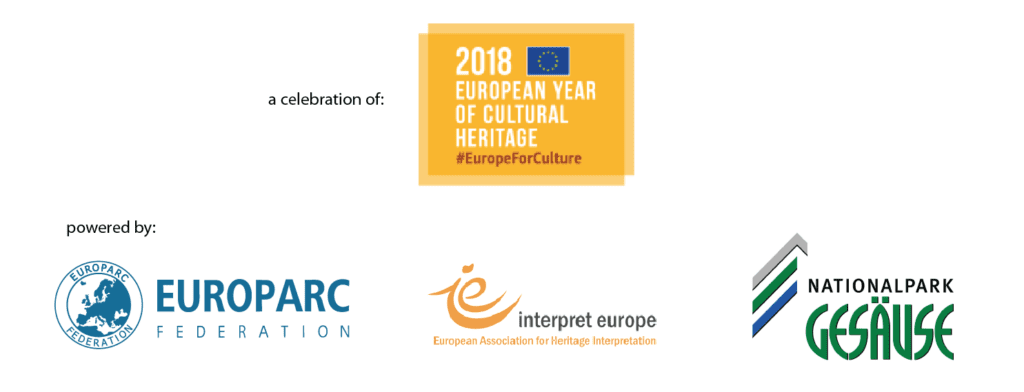Webinar: Cultural Heritage and Interpretation
“Natural heritage and cultural identity: the role of interpretation“
9.02.2018
Cultural Identity is rooted in the connection to the land and therefore interpretation of natural and cultural landscapes is something inherent in most protected areas of Europe. Whether this be in the form of panels, exhibition in visitor centres or art installation, helping visitors understand their cultural heritage and connect to nature is fundamental to European parks.
In this webinar, Carol Ritchie, EUROPARC Executive Director, set the scene on the importance of giving protected area visitors an authentic experience, towards enhancing the connection between our natural and cultural heritage.
Download presentation
“Shaped by nature, sculpted by man”
is one of Ms Ritchie preferred sentences to describe the landscape in European Protected Areas. Indeed, the human dimension and cultural activities that once took place in many protected spaces should always be included in the speech of managers, rangers, guides, interpreters,…
Meanwhile, thanks to an active discussion from the webinar participants, we got some interesting materials for all those interested in the topic:
- Linking Natura 2000 and cultural heritage – Case Studies – published by the European Commission
- People-Centred Approaches – by ICCROM
- LIFE Project Historic Heritage and Nature Conservation
Case Study 1: Engaging citizens through heritage interpretation?
Download presentation
Unfortunately, due to technical reasons, Mr Thorsten Ludwig from Interpret Europe couldn’t join us in the live session. However, we managed to have his presentation recorded, so you can watch it below.
“The role of interpretation is to connect people with the land.”
Thorsten started by explaining the aim of interpretation through the “interpretative triangle”. The interpreter, regardless the type of feature is there to be shared with visitors (natural, historical, cultural) has a fundamental role in connecting people with the land, by turning phenomena into experiences, provoking resonance and offering paths to a deeper meaning.

So how do we attribute meaning? Throughout the presentation, Thorsten referred how framing concepts can help attributing meaning to an interpretative experience, and recommended some readings for those interested in the subject. You can download guidelines and other relevant material at
Case Study 2: From theory to practice: Interpretation in Gesäuse National Park
Download presentation
In Gesäuse National Park, interpretation is an essential part in trainings, exhibits and panels within the Park. Martin Hartmann shared how interpretation is interwoven in the daily work of Park and share some of their successful experiences and answered to the many questions our participants have asked.
Watch the complete recording of the webinar:
Comming opportunities to celebrate the European Year of Cultural Heritage:
On the occasion of the official launch of the European Year of Cultural Heritage, the EUROPARC Federation and Interpret Europe announced a partnership focused on the role of natural heritage to explore cultural identity. The organisations will be investigating new ways on how heritage interpretation can encourage citizens to reflect upon this important relationship.
Throughout the year, members from both organisations will have the chance to work and learn more about this topic in four key events across Europe:
- Seminar ‘Natural Heritage as Part of Cultural Identity’ in Siggen, Germany
- Interpret Europe Conference ‘Heritage and Identity’ in Kőszeg, Hungary
- EUROPARC Conference ‘European Parks: Inspired by the Next Generation’ in Aviemore, UK
- Presentation of the key project results at a seminar in Brussels, Belgium

PreviousNext